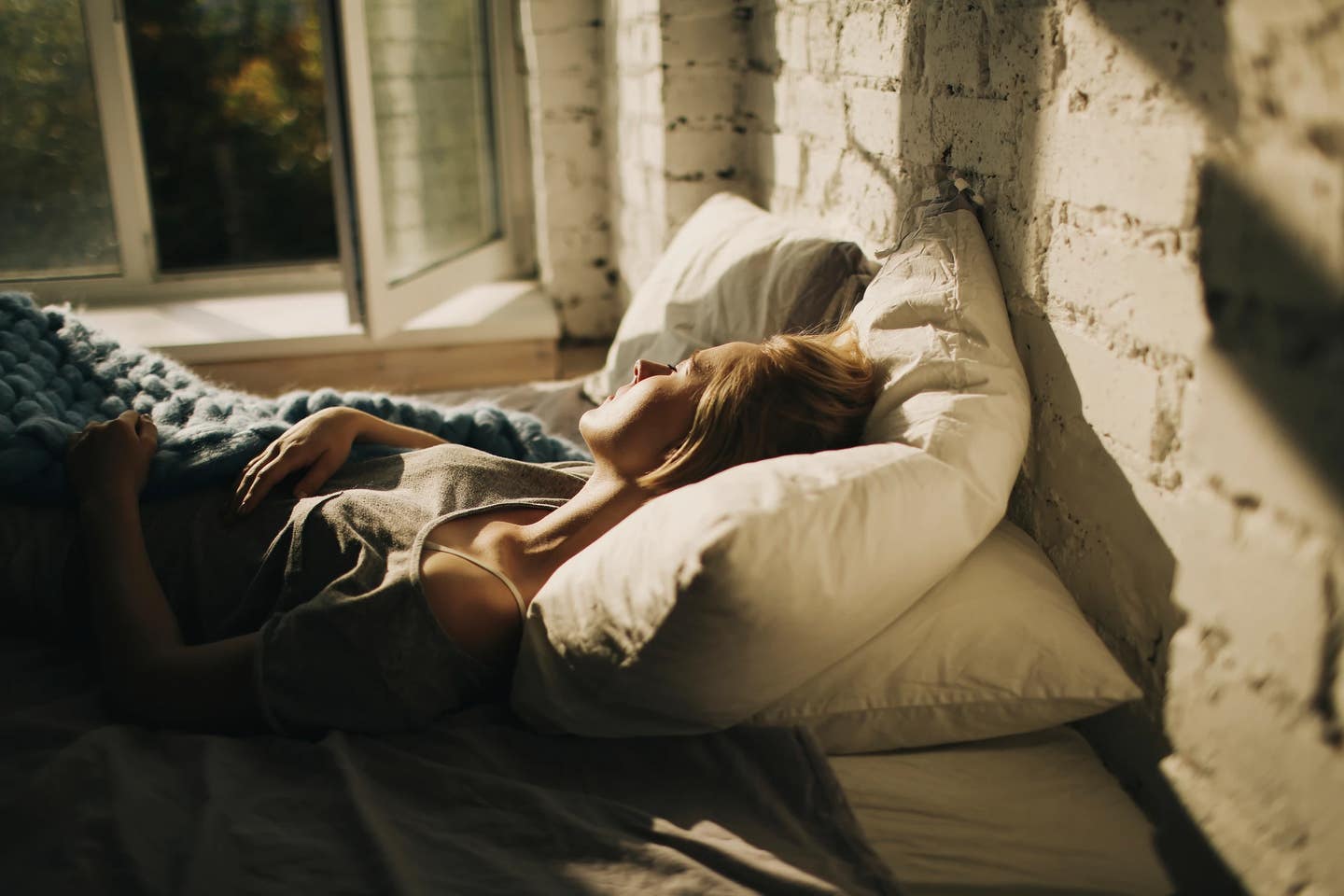Study links air pollution, heat, carbon dioxide, and noise to reduced sleep
The findings highlight the importance of the bedroom environment for high-quality sleep, according to study lead author.

[Apr. 19, 2023: JD Shavit, The Brighter Side of News]
Research has suggested that air pollution, high levels of carbon dioxide, ambient noise, and warm bedroom temperatures may all be contributing factors to sleep disruption. (CREDIT: Getty Images)
A new study conducted by researchers from the Perelman School of Medicine at the University of Pennsylvania and the University of Louisville has suggested that air pollution, high levels of carbon dioxide, ambient noise, and warm bedroom temperatures may all be contributing factors to sleep disruption.
The study, which was published in the Sleep Health journal, analyzed multiple environmental variables in participants’ bedrooms and found that higher levels of air pollution, carbon dioxide, noise, and temperature were independently linked to lower sleep efficiency.
The study, which is one of the first to measure multiple environmental variables in the bedroom and analyze their associations with sleep efficiency, monitored 62 participants for two weeks using activity monitors and sleep logs.
The findings highlight the importance of the bedroom environment for high-quality sleep, according to study lead author Mathias Basner, MD, PhD, professor and director of the division of Sleep and Chronobiology in the department of Psychiatry at Penn Medicine.
Related Stories
In addition to work and family obligations that compete with sleep for time, a changing environment due to growing urbanization and climate change seems to have made it harder to get a good night’s sleep.
Sleep that is of inadequate duration, or inadequate efficiency due to frequent disruption (“tossing and turning”), affects work productivity and quality of life. It also has been linked to a higher risk of chronic diseases including heart disease, type 2 diabetes, depression, and dementia.
The study was a collaboration between Penn Medicine and the Christina Lee Brown Envirome Institute of the University of Louisville, which is led by Aruni Bhatnagar, PhD. The researchers recruited participants from the National Institutes of Health-funded Green Heart Project that investigates the effects of planting 8,000 mature trees on the cardiovascular health of Louisville residents.
The researchers compared sleep efficiency during exposures to the highest 20 percent of levels versus lowest 20 percent of levels for each of the environmental variables measured. Through this analysis, they found that high noise was associated with a 4.7 percent decline in sleep efficiency compared to low noise, high carbon dioxide with a 4.0 percent decline compared to low levels, high temperature with a 3.4 percent decline compared to low temperature, and high particulate matter <2.5 micrometers (PM2.5) with a 3.2 percent decline compared to low PM2.5. Two other sleep environment variables, relative humidity and barometric pressure, appeared to have no significant association with sleep efficiency among the participants.
Interestingly, only bedroom humidity was associated with sleep outcomes assessed with questionnaires, such that higher humidity was associated with lower self-reported sleep quality and more daytime sleepiness. This suggests that studies based on questionnaires may miss important associations readily detected by objective measures of sleep.
Main experiment: comparison of the CO 2 concentration during night-time, each bar representing a 4-day average. (CREDIT: ResearchGate)
The researchers also found that most study participants rated humidity, temperature, and noise levels in the bedroom as “just right” regardless of the actual exposure levels. Basner suggested that this may indicate a habituation to the bedroom environment that may be disturbing sleep, even if the participants are not aware of it.
“We seem to habituate subjectively to our bedroom environment, and feel there is no need to improve it, when in fact our sleep may be disturbed night after night as evidenced by the objective measures of sleep we used in our study,” said Basner.
The study’s authors suggest that more research is needed on interventions that could improve sleep efficiency by reducing exposures to these sleep-disrupting factors. Bhatnagar said that this could be as simple as leaving a bedroom door open to lower carbon dioxide levels and using triple-pane windows to reduce noise. The researchers have also applied for funding to investigate whether planting trees can improve sleep and cardiovascular health through improving health behaviors and the bedroom environment.
Overall, this study highlights the importance of considering the impact of environmental factors on sleep quality. While many people focus on personal habits such as screen time or caffeine intake as the main factors affecting sleep, this research suggests that the bedroom environment is equally important.
The study's findings also have implications for public health policy. For example, governments could take steps to reduce air pollution and noise levels in urban areas, or provide guidelines for home construction and renovation that prioritize optimal bedroom conditions for sleep.
However, improving the bedroom environment is not always feasible for everyone. Many people may not have control over the noise or air quality in their home, or they may not be able to afford renovations. In such cases, there may be other interventions that could help, such as using earplugs or air filters.
The study's authors note that further research is needed to explore the complex relationships between environmental factors and sleep quality. For example, future studies could investigate whether the effects of these factors on sleep depend on individual differences, such as age or health status.
The study also raises questions about the effectiveness of subjective measures of sleep quality, such as self-reported sleep surveys. The findings suggest that these measures may not always reflect the actual quality of sleep experienced by individuals, and that objective measures such as activity monitors may be more accurate.
Note: Materials provided above by The Brighter Side of News. Content may be edited for style and length.
Like these kind of feel good stories? Get the Brighter Side of News' newsletter.



